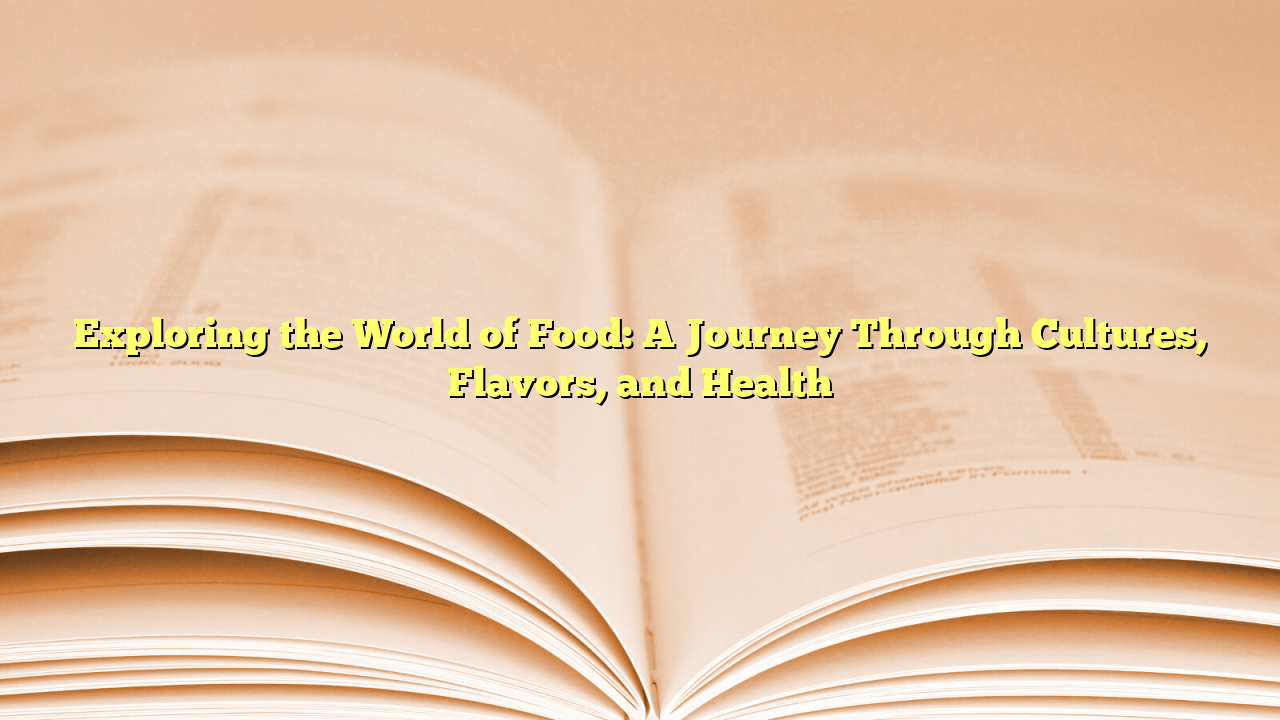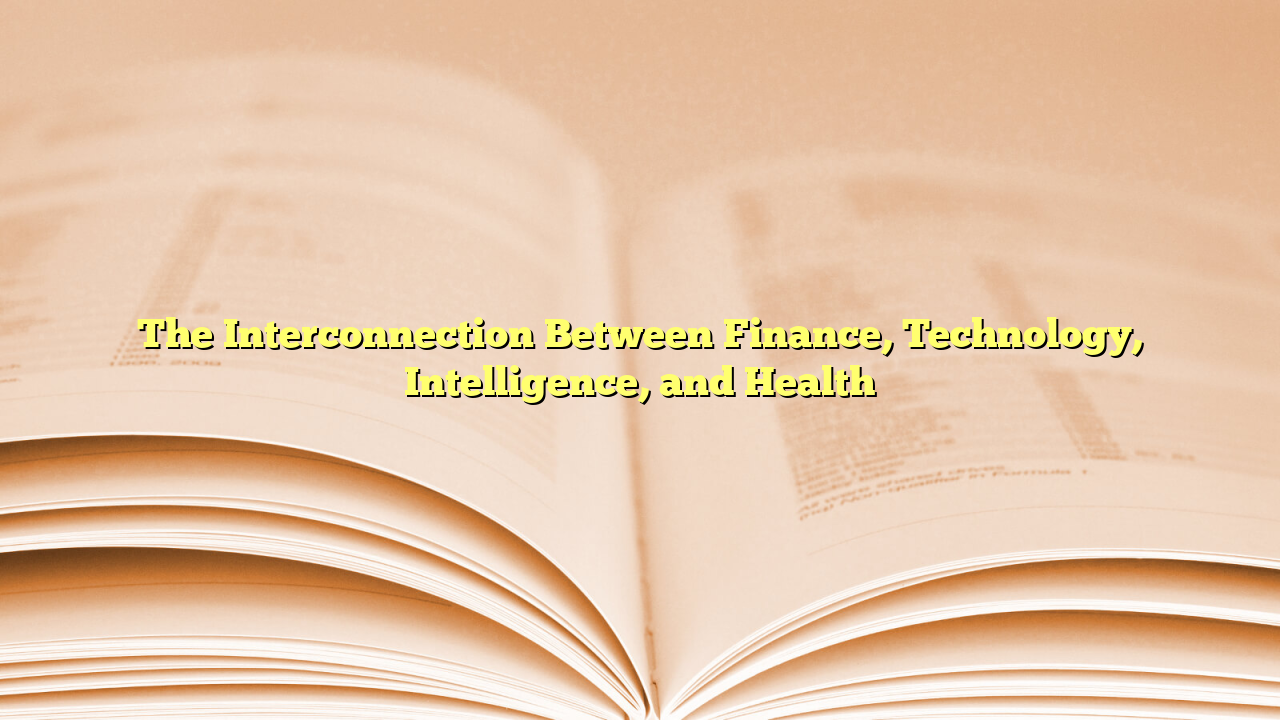Food is more than just sustenance; it is an essential part of every culture, a source of
comfort, and a driver of creativity. Around the world, food serves as a unifying force, linking
people to their heritage while allowing for new discoveries and experiences. In this article,
we will explore the diverse world of food, from its role in culture and history to its impact on
our health.
The Cultural Significance of Food
Food is deeply embedded in the history and identity of cultures across the globe. For many
societies, traditional dishes represent a connection to ancestors and a way to honor the past.
Take, for example, the rich food traditions of Italy. Italian cuisine is revered worldwide for its
emphasis on fresh ingredients and bold flavors. Each region of Italy has its own signature
dishes, from the creamy risottos of the north to the tomato-based pastas of the south. The
act of sharing a meal, whether it be pasta, pizza, or a freshly baked loaf of bread, is integral
to family life in Italy.
In other parts of the world, food is often tied to religious and spiritual practices. In India, food
plays an important role in Hindu, Sikh, and Buddhist rituals. Vegetarianism is encouraged in
many spiritual teachings, and the use of aromatic spices like turmeric, cumin, and coriander
is believed to have a deeper significance, not just in terms of flavor, but also in promoting
balance and health. Similarly, in Japan, food is highly symbolic, and the presentation of
dishes, such as sushi or tempura, is treated as an art form.
Food also serves as a form of communication and expression. In Mexico, the vibrant colors
and diverse ingredients in dishes like tacos, enchiladas, and tamales reflect the country’s
history, including indigenous, Spanish, and African influences. These meals are not only a
celebration of flavor but also a form of storytelling, each ingredient representing a piece of
Mexico’s colorful narrative.
The Globalization of Food
In recent decades, food has become more globalized. With the rise of travel, immigration,
and the internet, flavors that were once isolated to specific regions have found their way to
the dinner tables of other countries. Sushi, once only popular in Japan, can now be found in
cities around the world. Similarly, Indian curry has become a staple in the United Kingdom,
while Chinese takeout is now ubiquitous in the United States.
The globalization of food has led to fusion cuisine, where chefs experiment with combining
traditional ingredients and techniques from different cultures. For instance, dishes like
Korean tacos or sushi burritos blend Asian and Mexican flavors, offering exciting new
culinary experiences. The melding of flavors reflects the dynamic nature of modern food
culture, where borders are increasingly less significant in the realm of cuisine.
However, this globalization of food has also led to challenges. The demand for specific
ingredients has resulted in overfarming and environmental degradation. The global reach of
fast food chains, such as McDonald’s and KFC, has contributed to a homogenization of food
culture, often pushing out local traditions. The debate over how to preserve traditional food
cultures while embracing globalization continues to be an important conversation in the food
world.
Food and Health: A Delicate Balance
Beyond culture and globalization, food plays a critical role in our health. Our relationship with
food has evolved significantly over the centuries. In early human history, food was primarily
about survival—finding enough calories to sustain energy levels. Today, food is not only
about survival but also about thriving. With morfintoto growing awareness of nutrition, people are
more conscious of how their food choices impact their health and well-being.
A well-balanced diet is essential for maintaining physical and mental health. In recent years,
there has been a growing focus on plant-based diets, driven by research that suggests plant
foods can reduce the risk of chronic diseases like heart disease, diabetes, and cancer.
Fruits, vegetables, legumes, and whole grains are packed with vitamins, minerals, fiber, and
antioxidants that promote better health. The popularity of vegetarian, vegan, and flexitarian
diets reflects this increasing awareness of food’s connection to health.
On the other hand, the prevalence of processed foods in modern diets has raised concerns.
The widespread consumption of fast food, sugary snacks, and packaged meals has
contributed to the rise of obesity, diabetes, and other lifestyle-related diseases. High in fats,
sugars, and salts, these foods offer little nutritional value and can lead to long-term health
problems.
The conversation around food and health also includes sustainability. As the global
population grows, there is a rising need for sustainable farming practices to ensure the future
of food production. Efforts to reduce food waste, eat locally grown produce, and support
ethical farming practices are gaining momentum as people become more aware of the
environmental footprint of their food choices.
The Joy of Food: A Source of Connection
At its core, food is about more than nourishment. It is about connection. Whether we are
sharing a meal with family, friends, or strangers, food brings people together in ways that
transcend language, culture, and distance. The act of cooking and sharing a meal is a
communal experience that fosters bonds and creates memories.
In many ways, food is an expression of love. Preparing a favorite dish for a loved one or
gathering around a table to celebrate a special occasion are ways we show care and
appreciation for one another. The shared experience of eating can strengthen relationships
and build a sense of community.
Moreover, food is often at the center of celebrations. Think of birthdays, weddings, holidays,
or religious feasts—these occasions are often marked by special meals that signify more
than just a need for sustenance but a time to honor traditions, celebrate milestones, and
enjoy life’s pleasures.
Conclusion
Food is a multifaceted element that shapes our identities, cultures, and well-being. It brings
people together, connects us to our past, and offers opportunities for creative expression.
Whether enjoyed at a family gathering, in a restaurant with friends, or through an
adventurous culinary exploration, food is an integral part of what makes life rich and full. As
we continue to navigate the complexities of global food systems and health, we must
remember that food is not just fuel—it is a language that speaks to the heart, mind, and soul.
Exploring the World of Food: A Journey Through Cultures, Flavors, and Health



